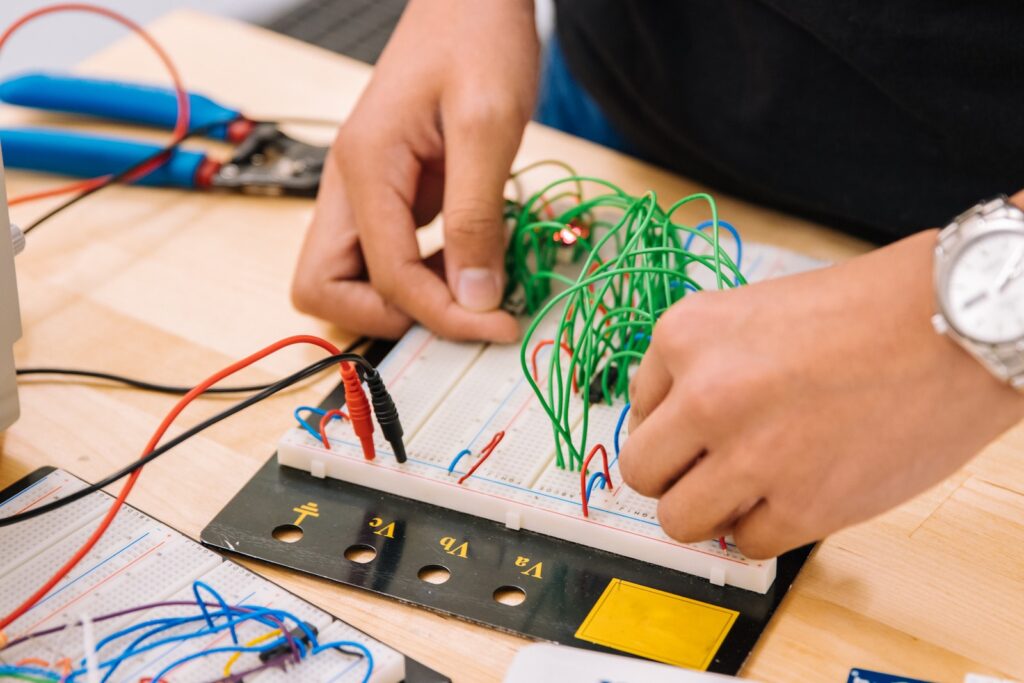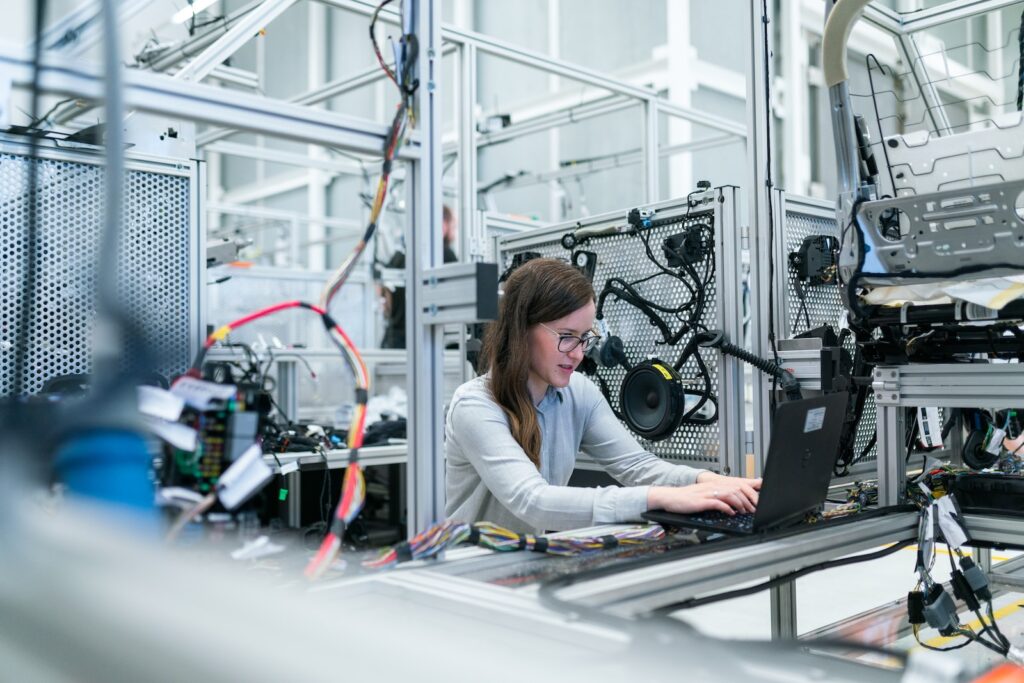Introduction
What is that one universal language that speaks to humanity’s innate curiosity, constantly questioning and striving to understand the world around us? Yes indeed, it is the language of science. Science education is essentially our key to unlock the doors of discovery, innovation, and knowledge.
Yet, these doors appear to be shut tight for many due to a myriad of complexities and barriers. The need of the hour is to break down these barriers and make science education accessible to everyone, regardless of their background or circumstances.
Why is this so important, you might ask. Well, let’s delve a little deeper. Imagine a world where everyone, regardless of their socioeconomic status, gender, or cultural background, has a fair chance to explore, learn, and contribute to scientific advancements.
A world where the language of science is not restricted to those in lab coats, but is spoken and understood by all. This is the world we strive for, and this is what makes the aim of this article – discussing ways to make science education more accessible – so vitally important.
The journey towards inclusive science education is one riddled with complexities. It’s like walking through a dense forest, where every step is met with a new challenge. These challenges range from deep-seated societal norms and prejudices to disparities in resources and opportunities.
Even in the 21st century, many people are denied access to quality science education due to their socioeconomic status, gender, or cultural affiliations. The impact of these barriers is far-reaching, affecting not just individuals but society as a whole.
Consider, for instance, communities living in remote or impoverished areas. For them, access to basic education, let alone science education, can be a luxury. Or consider girls in certain cultures who are discouraged or even denied from pursuing education in scientific fields. The inequities are glaring, and they paint a picture of a world that’s far from ideal.
But this is not a tale of despair; rather, it’s a call to action. It’s a challenge to each one of us to play our part in dismantling these barriers and paving the way for a more inclusive and accessible science education. By understanding the barriers faced by different groups and communities, we can tailor our approach to address their specific needs and circumstances.
So, let’s embark on this journey together. Let’s explore the barriers to science education, understand their impact, and discuss potential solutions. Let’s highlight the importance of inclusivity and diversity in science education, and let’s delve into the role of technology and community engagement in making science education accessible to all.
And most importantly, let’s remind ourselves of the pressing need for ongoing efforts and initiatives to promote inclusivity in science education. For at the end of the day, science is for everyone.
Understanding the Barriers to Science Education

Delving into the field of science education, we often unearth a myriad of obstacles that hamper the universality of this critical discipline. From socioeconomic disparities to gender biases, to cultural constraints, a multitude of factors limit the accessibility of science education for all.
Socioeconomic Status often plays a significant role in determining the extent and quality of science education that individuals receive. The wealth gap can drastically affect the distribution of educational resources, creating a chasm between those who can afford quality education and those who cannot. For instance, students from underprivileged backgrounds may lack access to fully equipped science laboratories or skilled tutors, resulting in a compromised educational experience.
- Gender continues to be a major barrier in certain societies where deep-seated stereotypes and cultural norms discourage girls from pursuing science education. This gender bias not only restricts individual potential but also deprives the world of diverse scientific perspectives and innovations.
- Cultural Barriers can also impede access to science education. In some communities, science may be perceived as incompatible with traditional beliefs or values, leading to a lack of interest or even active discouragement. This could be exacerbated by a lack of culturally relevant science education materials, further alienating these individuals from the wonders of science.
The repercussions of these barriers are not confined to individual students but also ripple through our society as a whole. For example, communities with limited access to science education often face higher rates of poverty and unemployment, perpetuating a cycle of socioeconomic disadvantage. These barriers also contribute to a lack of diversity in the scientific community, leading to a narrower range of ideas and innovations.
In an era where scientific literacy is of paramount importance, these barriers are more than just individual hurdles; they pose a collective challenge to our society’s progress. Addressing them requires an understanding that is as nuanced as the barriers themselves, and a commitment to making science education accessible to all, regardless of socioeconomic status, gender, or cultural background.
The Importance of Inclusivity in Science Education
The term “inclusivity” may seem like the latest buzzword in education, but when it comes to science education, it’s more than just a trend. Inclusivity in science education refers to the practice of ensuring that everyone, regardless of their background, has an equal opportunity to learn, engage, and succeed in science. It’s a journey towards breaking down barriers and fostering a sense of belonging for all learners.
Understanding the Benefits of Inclusive Science Education
Inclusive science education offers a wealth of benefits. First, it encourages a diversity of perspectives which can lead to innovative solutions to scientific problems. It also fosters a sense of belonging among all learners, enhancing their motivation and engagement. Moreover, by exposing students to diverse scientific role models, we can fight stereotypes and inspire all students to see themselves as future scientists.
The Role of Representation and Diversity in Inclusive Science Education
Representation and diversity play a pivotal role in creating an inclusive learning environment. Seeing scientific professionals who look like them, share their experiences, or originate from similar backgrounds can encourage students to pursue science further. It’s like seeing a mirror that reflects their potential and boosts their confidence. Hence, we need educators and institutions to actively promote representation in science education, ensuring all students have relatable role models within the field.
The Need for Active Promotion of Inclusivity in Science Education
It’s not enough to just talk about inclusivity; we need to walk the walk. Educators and institutions must actively foster an inclusive learning environment. This could involve adapting teaching methods to cater to diverse learning styles, integrating multicultural perspectives in science content, or creating a safe and welcoming classroom climate for all students. The task is challenging, but the pay-off in terms of increased student engagement and learning outcomes is worth the effort.
- Adapting teaching methods: Not all students learn in the same way. By exploring different teaching methods, educators can cater to varied learning styles and help all students grasp complex scientific concepts.
- Integrating multicultural perspectives: Science isn’t just a Western construct. By integrating diverse scientific contributions from around the world, educators can showcase the universality of scientific discovery and foster global scientific literacy.
- Creating a safe classroom climate: Students learn best when they feel welcomed, valued, and respected. Hence, creating a positive classroom climate is crucial for inclusive science education.
Ultimately, the goal of inclusivity in science education is not just to create a fair and democratic learning environment. It’s also about empowering all students to realize their potential as future scientists and innovators. By making science education inclusive, we can help shape a diverse, resilient, and innovative scientific community for the future.
Breaking Down Complexity in Science Education

Many people perceive science as a challenging and complex subject. This perception can often act as a deterrent, discouraging individuals from exploring the vast and wondrous world of science. However, it’s crucial to remember that science, at its core, is about understanding the world around us. It’s not necessarily inherently complex, but rather it often boils down to the way it’s taught and presented.
One of the keys to breaking down the perceived complexity in science education lies with our educators. Teachers have a pivotal role in making complex concepts accessible and relatable to students. It’s like untangling a knot; with patience, skill, and a step-by-step approach, even the most intricate knots can be undone.
- Use real-world examples: One effective strategy is to connect scientific concepts to real-world examples. This helps students understand the practical applications of science, making it more relevant and engaging.
- Simplify language: Scientific jargon can often be intimidating. Whenever possible, teachers should use simple and clear language to explain concepts.
- Interactive learning: Engaging students in experiments and hands-on activities can make learning more fun and memorable. It allows students to learn by doing, reinforcing their understanding of the concepts.
Furthermore, there is a treasure trove of resources available these days that can help make science education more accessible. Let’s discuss a few innovative teaching methods and resources:
- Visual aids: Visual aids like charts, diagrams, and animations can help illustrate complex concepts. Think of it as giving a visual tour of a scientific concept, where students can visually explore and understand the subject matter.
- Educational games: Games can make learning fun and interactive, encouraging students to engage with the subject matter actively.
- Online platforms: Numerous online platforms offer a variety of learning resources, from video tutorials to interactive quizzes, providing a more engaging and flexible learning experience.
The challenge of making science accessible is not a simple one to overcome, but with creativity, patience, and the right approach, we can ‘untangle’ the complexity and open up the world of science to everyone.
The Role of Technology in Making Science Accessible

As we hurdle into the digital age, technology’s role in making science education accessible to all has never been more essential. Technology has broken down the ivory towers of academia, enabling science to be more than just a topic confined within the four walls of a classroom.
The potential of technology in increasing accessibility to science education is akin to a locksmith with a master key; it unlocks doors to a realm of learning that many would not have the opportunity to explore otherwise.
Virtual labs, for example, are a groundbreaking feature of modern education. They provide an environment where students can interact with the minutiae of scientific phenomena, all from the comfort of their homes. This is especially crucial for individuals who may not have access to well-equipped physical labs.
- Virtual labs can simulate a variety of experiments, from dissections to chemical reactions, giving students the chance to “get their hands dirty” without the constraints and potential dangers of a physical laboratory setting.
- These virtual platforms also allow for trial and error without the fear of wasting resources or causing accidents, promoting an environment of exploration and learning.
Moving on from virtual labs, we have a plethora of online resources at our disposal. Online platforms offer interactive tutorials, video lectures, and even science games that make learning fun and engaging. The beauty of these resources is their ability to cater to different learning styles; visual learners can benefit from graphic animations, while auditory learners can learn from podcasts or recorded lectures.
- Many educational websites also offer forums where students can ask questions and engage in discussions, fostering a sense of community among learners from different backgrounds.
- These resources are typically available 24/7, allowing for self-paced learning and the flexibility to revisit concepts as needed.
Finally, educational apps are another gem in the technology treasure chest. These apps can turn mundane commutes into productive learning sessions, or transform a waiting room experience into a quick science quiz challenge. The convenience and accessibility of science education at our fingertips is a revolutionary step in breaking down educational barriers.
However, while technology offers an abundance of benefits, we must not overlook the need for equitable access to technology for all individuals. Technology should be a bridge, not a barrier. It’s crucial that initiatives are taken to ensure all students, regardless of their socioeconomic status, have access to the digital tools needed for modern science learning.
In conclusion, technology plays a pivotal role in making science accessible to all. From virtual labs to educational apps, it provides tools that not only simplify complex concepts but also make learning interactive and fun. As we move forward, we must strive to ensure no one is left behind in this digital leap.
Collaboration and Community Engagement in Science Education

Imagine a tree. The roots represent the students, thirsty for knowledge, while the trunk is the educator, guiding and nurturing. The branches are the parents, reaching out to support, and the surrounding soil represents the community, providing a fertile environment for growth.
This ecology is essential for successful science education. Without collaboration and community engagement, our tree – the symbol of science education – may struggle to flourish.
The journey towards making science education accessible for all individuals isn’t just about the textbooks, the technology, or even the teachers alone. It’s about the collective effort of everyone involved. It’s about breaking down the silos within which we traditionally view education and embracing a more holistic approach.
Let’s look at the role that different stakeholders play in this endeavor:
- Educators: They are the compass guiding students through the vast ocean of science. Their role transcends teaching science concepts; they’re responsible for creating an inclusive and supportive environment that encourages every individual to participate.
- Parents: They are the consistent thread tying the learning experience together. Parents can foster a love for science in their children right from an early age, making it a part of their everyday life.
- Community organizations: They provide the much-needed resources, support, and opportunities for exposure to real-world science. They can offer students internships, workshops, and competitions, bridging the gap between the classroom and the real world.
Collaboration between these parties can significantly amplify the impact of science education. It can transform classrooms into crucibles of curiosity and innovation, where science is not just a subject, but a way of thinking and solving problems.
Moreover, community engagement plays a critical role in making science education more inclusive and accessible. Community resources, such as libraries, science centers, and museums, can provide individuals with exposure to science outside the traditional classroom setting. These community spaces provide a platform for individuals to interact with science in a more hands-on and engaging way, sparking interest and curiosity.
Examples of successful collaborations and community initiatives abound. For instance, the ‘Science on the Street’ program in Massachusetts, USA, is an excellent example of a community initiative making science accessible to everyone. This program brings interactive science exhibits to community events, making science fun, engaging, and accessible to all, regardless of their backgrounds.
In conclusion, the journey towards making science education accessible to everyone requires us all to join hands. It requires us to break down the barriers of the classroom and embrace the world as our learning space. Because in the end, science education is not just about imparting knowledge, but about fostering curiosity, and igniting a passion for lifelong learning.
Overcoming Challenges and Moving Forward

Overcoming challenges in making science education accessible to all individuals is a continuous and complex process. There are many hurdles, both anticipated and unforeseen, that need to be addressed to achieve this goal. It’s not a one-off effort, but a journey that requires resilience, resourcefulness, and constant innovation.
One of the primary challenges is the lack of resources. This includes both physical resources like books, lab equipment, and space, and human resources such as qualified and motivated educators. Especially in low-income communities, these resources are often scarce or non-existent. Consequently, the quality of science education suffers, making it less appealing and accessible to students.
Another significant barrier is the cultural mindset. In many societies, science is viewed as a difficult subject, suitable only for a select few. This perception discourages many students, especially those from marginalized communities, from pursuing science education. Changing this mindset is crucial, but it requires a collective effort from educators, parents, and the wider community.
- Equipping schools with adequate resources is a critical step towards making science education accessible. This can be achieved through various means such as fundraising, donations, or government funding.
- Training educators is equally important. Teachers need to be well-prepared to explain complex science concepts in a simple and engaging manner. They also need to be trained in inclusivity and diversity, so they can create a welcoming learning environment for all students.
- Changing the cultural mindset towards science education is a long-term goal. It involves ongoing dialogue, community outreach, and positive representation of scientists from diverse backgrounds.
Despite these challenges, it’s essential to keep moving forward. The benefits of making science education accessible to everyone are immense. Besides promoting social equality, it also fosters innovation, critical thinking, and a better understanding of the world.
- Continuous efforts to break down barriers to science education are necessary. This includes advocacy, policy changes, and various initiatives to promote inclusivity and diversity.
- Collaboration between different stakeholders, including educators, parents, community organizations, and policy-makers can help to accelerate these efforts.
- Technological advancements can also play a key role. Virtual labs, online resources, and educational apps can make science education more accessible, particularly for students in remote or underserved areas. However, it’s also important to ensure that all students have equal access to these technologies.
In conclusion, overcoming challenges in making science education accessible to all is a complex task, but it’s definitely worth the effort. It not only benefits individuals but also contributes to a more informed, creative, and equitable society.
Conclusion
As we reach the end of our exploration into the prospects of making science education accessible to everyone, it is clear that inclusivity and accessibility are not just feel-good words, but they are in fact, crucial factors that can shape the future of science education, and our society as a whole.
Throughout this article, we’ve explored the different sides of the problem of inaccessibility in science education. We’ve discussed the existing barriers – socioeconomic, gender, and cultural – that hinder individuals from getting the science education they deserve. We’ve shone a light on the impact of these barriers on individuals and on the wider society, and we hope this gives a sense of urgency to the issue at hand.
Emphasizing the importance of inclusivity in science education, we highlighted the role of representation and diversity, and called on educators and institutions to take up this mantle. This isn’t a simple task – it involves breaking down complex concepts, creating a welcoming learning space, and continuously innovating in teaching methodologies. Yet, the benefits that can be reaped from such an endeavor are immense.
Technology, undeniably, has a massive role to play in this. From virtual labs to educational apps, we’ve delved into the many ways technology can make science education more accessible. But it’s important to remember that technology alone isn’t the solution – we need to ensure that it reaches everyone, irrespective of their background.
No discussion about making science education accessible can be complete without talking about collaboration and community engagement. The relationship between educators, parents, community organizations is a symbiotic one. They need to come together, work together, to create an environment that encourages learning for all.
It won’t be easy, and we’ve highlighted some of the challenges that might arise. However, it’s important to remember that the long-term benefits of making science education accessible to everyone far outweigh these challenges. We’ve also provided examples of successful collaborations and initiatives that prove it’s possible. This isn’t a pipe dream, but a feasible, achievable goal.
In conclusion, making science education accessible to everyone is not just a responsibility, it’s a necessity. Through this article, we hope to inspire individuals, educators, and institutions to take proactive steps in promoting inclusivity in science education. And while the path might be strewn with obstacles, the end result will be worth every effort. Because ultimately, when everyone has access to science education, we all benefit.

